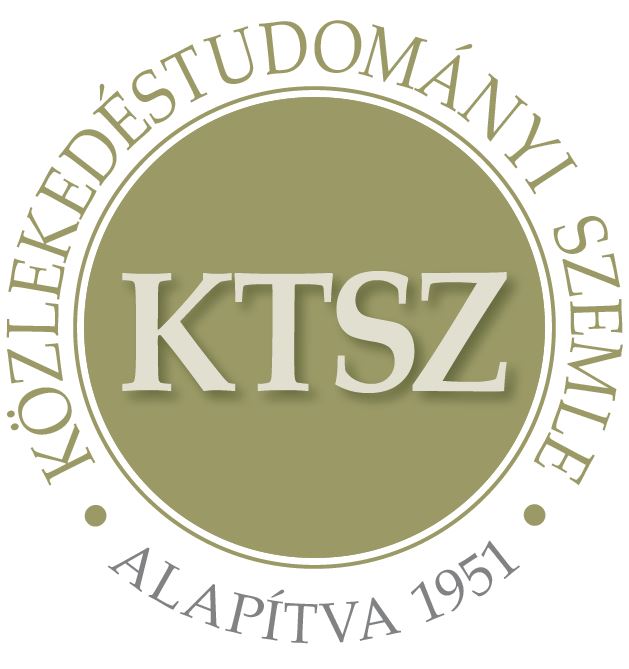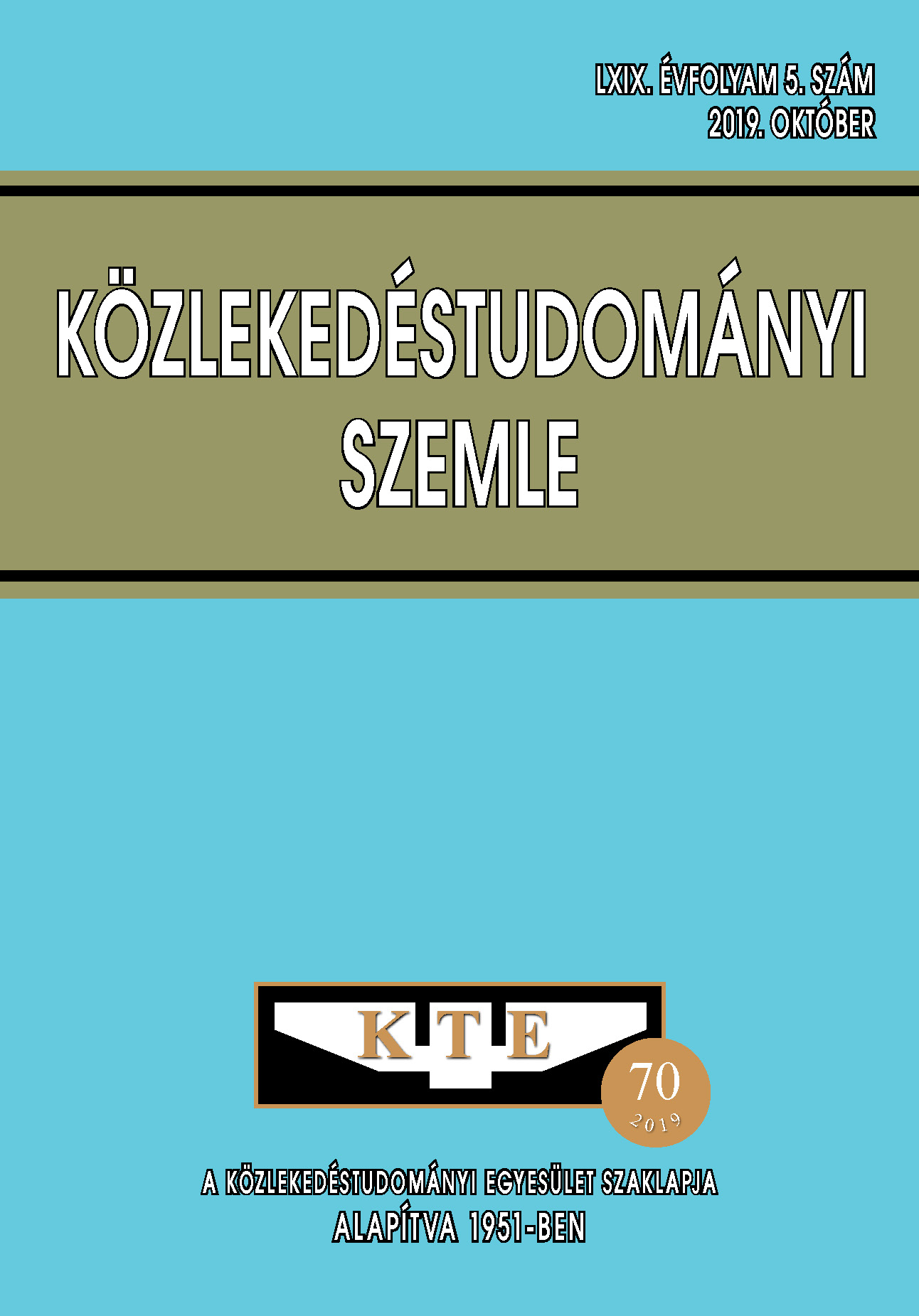Járműtrajektória előállítása gyorsulás szenzorból nyert adatokból
Absztrakt
A kutatás célja a korábban létrehozott ACFM (Adaptive Car Following Model) járműmodell validálásához szükséges a valóságban mért járműkövetési távolságok meghatározása. Három változót (gyorsulás, sebesség, távolság) lehet mérni, amelyből számolható a követési távolság.
Hivatkozások
Tettamanti T., Varga I., Csikós A.: Közúti Mérések, Typotex, Budapest, 2016.
Luspay T., Tettamanti T., Varga I.: Forgalomirányítás, Typotex, Budapest, 2011.
B.D. Greenshields: A study of traffic capacity. In Proceedings of the Highway Research Board, vol. 14, pp. 448-477, 1935.
M. Treiber, D. Helbing. Realistische Mikrosimulation von Straßenverkehr mit einem einfachen Modell, Dresden, 2002.
A. Kesting, M. Treiber, D. Helbing.: Enhanced intelligent driver model to access the impact of driving strategies on traffic capacity, Phil. Trans. R. Soc. A (368), 4585 – 4605, 2010. DOI: http://doi.org/cn2b8r
Mika P.: Adaptive car following model, Journal of Mechanical Engineering, vol. 68., no. 3, 281-288, 2018, DOI: https://doi.org/10.2478/scjme-2018-0041, DOI: http://doi.org/dbh6
L. A. PIPES.: Wave theories of traffic flow, Department of Engineering Univeryity of California, Los Angeles, California
L. A. PIPES.: Car following models and the fundamental diagram of road traffic, Transportation Research, Los Angeles, California, Vol. 1, pp. 21-29., 1967, DOI: http://doi.org/b2s6vv
H. GREENBERG.: An Analysis of Traffic Flow, Operation Research, Vol. 7, no. 1, pp. 79-85, 1959.
K. É. Gilicze, G. Debreczeni.: Közúti forgalmi áramlatok mikroszkopikus és makroszkopikus szemléletmódú jellemzése, Közlekedéstudományi szemle, 2010, Vol.: 60, pp. 16-20
Az elektronikusan megjelenő cikkek nyílt hozzáféréssel rendelkeznek (OJS), online ingyenesen elérhetők és letölthetők. A cikkek szerzőit nem terheli megjelentetési vagy kiadási költség (APC). Felhasználóknak joguk van a cikkek olvasására, letöltésére, másolására, kinyomtatására, valamint azokban való keresésre, vagy a teljes szöveg linkkel történő megosztására.
A szerzőknek nyilatkozniuk kell arról, hogy beadványukat korábban nem tették közzé más folyóiratban, a pénzügyi támogatás feltüntetésre került és a hivatkozások listája teljes és pontos, beleértve az URL-ek és a DOI-k specifikációját is (ha rendelkezésre állnak). A cikktervezet beadásakor minden szerző jóváhagyja a benyújtott változatot. A szerzők garantálják, hogy a cikk az ő eredeti művük. A szerzők kötelesek részt venni a szakértői értékelés folyamatában, követni a bírálók tanácsait, betartani az előírt határidőket, és amennyiben előfordulnak, kötelesek visszavonni a benyújtást vagy kijavítani a hibákat.
Minden beadott cikket szakértői értékelés alá kerül, ahol a szerkesztők független értékelést kérnek legalább egy szakértőtől, ügyelve arra, hogy a bíráló(k)nak ne legyen összeférhetetlensége a szerzőkkel. A végső döntést a főszerkesztő hozza meg, aki figyelembe veszi az értékeléseket és a szerkesztők javaslatait. A szerkesztők és a lektorok bizalmasan kezelik a beadványt.
A kiadó és a szerkesztők elkötelezettek a magas etikai normák betartása mellett, és megakadályozzák azokat a publikációkat, amelyekben kutatási visszaélés történt. Az ilyen etikai kérdésekben a COPE irányelveit követik.
A szerzők fenntartják a szerzői jogokat, és megadják a folyóiratnak az első közzétételi jogot a Creative Commons Licenc alapján (https://creativecommons.org/licenses/by-nc-nd/4.0), amely lehetővé teszi mások számára, hogy megosszák a művet, elismerve a mű szerzőségét és a folyóiratban való első közzétételt.
A folyóirat archiválja az összes megjelent cikket, és a folyóirat tulajdonosa, a Közlekedéstudományi Egyesület továbbra is üzemelteti az adatbázist abban az esetben is, ha a folyóirat kiadása megszűnik.















